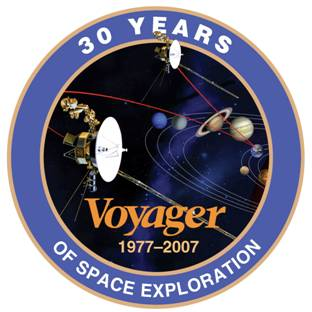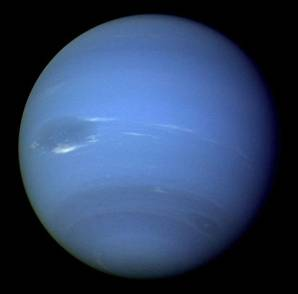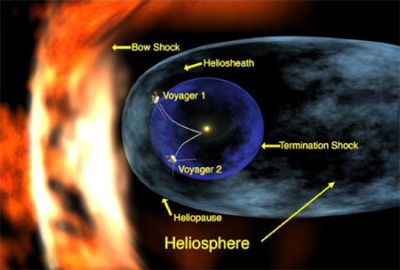22 August 2007

Credit: NASA/JPL
On 20 August 1977, NASA launched its highly successful Voyager 2 spacecraft, on a grand tour through the outer Solar System. About two weeks later, Voyager 2's companion,Voyager 1, spacecraft was launched toward Jupiter. This week, NASA celebrates the 30th anniversary of the start of the Voyagers' odyssey.
The two Voyagers are in " good health", and continue to relay valuable data from vast distances, exceeding three times the distance of Pluto.
"The Voyager mission is a legend in the annals of space exploration. It opened our eyes to the scientific richness of the outer solar system, and it has pioneered the deepest exploration of the Sun's domain ever conducted," said Alan Stern, Associate Administrator for NASA's Science Mission Directorate.
"It is a testament to Voyager's designers, builders and operators that both spacecrafts continue to deliver important findings more than 25 years after their primary mission to Jupiter and Saturn concluded."

Voyager 2 Arrives at Neptune, August 1989
Credit: NASA/JPL
During the first 4 years of their mission, the Voyagers made detailed explorations of Jupiter, Saturn, and their moons. Voyager 2 made the first ever flybys of Uranus (1986) and Neptune (1989).
The Voyagers revolutionized planetary astronomy. They returned incredible, unprecedented images and data, making startling discoveries about the outer planets and their moons. The spacecrafts studied Jupiter's turbulent atmosphere, which features giant, long-lasting hurricane-like storms, and discovered erupting volcanoes on Jupiter's moon Io. They also revealed waves and fine structure in Saturn's icy rings.

The Voyagers at the Final Frontiers of the Solar System
Credit: NASA/JPL
During the past 18 years, the Voyagers have been probing the far outreaches of the Solar System, far beyond the orbit of Neptune. Voyager 1 is currently the most distant spacecraft; traveling at a distance from the Sun of over 15 billion km. Voyager 2 is about 12.5 billion km from the Sun. The Voyagers will never return to Earth. They will escape the Solar System, and fly among the nearby stars for millenniums.
"The Voyager mission has opened up our Solar System in a way not possible before the Space Age," said Edward Stone, Voyager project scientist at the California Institute of Technology, Caltech. "It revealed our neighbors in the outer Solar System and showed us how much there is to learn and how diverse the bodies are that share the solar system with our own planet Earth."
In December 2004, Voyager 1 achieved a new milestone, reaching the Solar System's final frontier, termed the heliosheath. This is a turbulent area, located approximately 14 billion kilometers from the Sun, where the solar wind slows as it collides with the tenuous gas that pervades the interstellar space. Voyager 2 is expected to reach this boundary within a year. The Voyagers are about to cross the edge of the Solar System.
Each Voyager carries five sophisticated devices that study the solar wind, energetic particles, magnetic fields and radio waves, as they sail across this mysterious region of the Solar System. The two space probes are too far from the Sun to use solar power. They are powered by long-lived radioisotope thermoelectric generators, and operate on only less than 300 watts.
The Voyagers contact Earth via NASA's Deep Space Network, a system of widely-spaced giant antennas. The probe's distances are so vast that signals from ground-control on Earth, traveling at the speed of light, take 14 hours to reach Voyager 1. Each Voyager recedes at approximately 1 million miles per day.

The Voyagers' Golden Records
Credit: NASA/JPL
Each of the Voyagers carries a golden record that is a time capsule with greetings, images and sounds from Earth. The records also include guides on how to find Earth if the spacecraft is recovered by some intelligent extraterrestrial being.
En route to Pluto, NASA's spacecraft New Horizons is now well past Jupiter, which is approximately 800 million km from Earth, and is expected to arrive at the dwarf planet in July 2015.
Further Reading
Voyager Websites
http://www.nasa.gov/mission_pages/voyager/index.html
http://voyager.jpl.nasa.gov/
Aymen Mohamed Ibrahem
Senior Astronomy Specialist